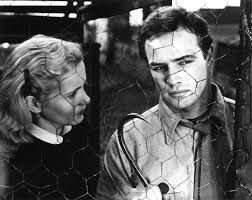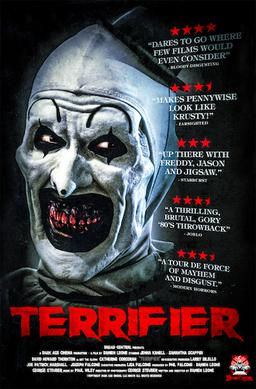On the Waterfront (1954) review
- Jeremy Kelly
- Jul 15, 2022
- 4 min read
Updated: Jul 15, 2022
On the Waterfront (1954)
Directed by: Elia Kazan
Produced by: Sam Spiegel
Screenplay by: Budd Schulberg
Starring: Marlon Brando, Karl Malden, Lee J. Cobb, Rod Steiger, Pat Henning, Eva Marie Saint

Across all walks of life, people have stories: stories of joy, pain, cruelty, uncertainty, love, fear, what have you. You look at the story of film director Elia Kazan, and you see how acts of indiscretion can tarnish a person’s otherwise historic legacy, but also come out in creative, impactful ways. Born in Constantinople (now Istanbul), Kazan had a knack for seeking out young unknown talent like Warren Beatty, Lee Remick and James Dean, and making films that tackled powerful social issues like anti-Semitism, racism, and religious symbolism. He founded the famous Actors Studio in Manhattan, and directed some of the most renowned movies and Broadway plays of the late 1940s and early ‘50s. Then he bought into Joseph McCarthy’s communism blacklisting by naming eight people before the HUAC, and two years later came out with “On the Waterfront,” a film about union violence, corruption and racketeering among longshoremen in Hoboken, New Jersey. It’s a classic movie shrouded in controversy, but there is something to be said about how the events of the story reflect on the main characters, and not always in ways that are cut and dry.
The main character is Terry Malloy (Marlon Brando), a former prize fighter who inadvertently contributes to the murder of fellow dock worker Joey Doyle (Ben Wagner), who was planning to testify against corrupt union boss Johnny Friendly (Lee J. Cobb) to the Waterfront Crime Commission. As is customary, nobody comes forward with testimony, fearing retribution to either their livelihood or their lives in general. Joey’s sister Edie (Eva Marie Saint) is on the warpath for answers, while local priest Father Pete Barry (Karl Malden) tries to encourage the men to stand together against Friendly’s tyranny, considering every union murder a crucifixion. Terry—who holds a favorable position with Friendly after throwing his last fight for a bet—strikes up a relationship with Edie, all the while wracked with guilt over Joey’s death. He’s eventually subpoenaed by investigators, and is left with a choice to stay quiet and keep what good standing he has, or risk losing everything.

Marlon Brando didn’t arrive in Hollywood as much as he exploded, earning Oscar nominations three straight years for his roles in “A Streetcar Named Desire,” “Viva Zapata!” and “Julius Caesar.” But his performance here as Terry was seen as the proverbial next step in film acting, a man who frequently puts on a tough, mean face, but actually has these soft-spoken sensibilities that are being tested by the weight of what he’s shouldering through his position. Past circumstances have numbed Terry to any outside pain; it’s only when he begins falling for Edie that he finds the courage to stand up against corruption. His “I could have been a contender” taxicab monologue is seen as one of the best character scenes in film history, coming in at No. 3 on the AFI’s list of Top 100 Movie Quotes; interestingly enough, Brando holds the No. 2 spot as well, which he earned in “The Godfather.” With his sad eyes, iconic flannel jacket and effortless body language, he’s as good as advertised, and would earn his first Academy Award; unlike with “The Godfather” 18 years later, however, he would accept the award.
Just as fantastic, in my opinion, is Eva Marie Saint as Edie in her first film role; she and Brando have terrific chemistry, and her sharp, inquisitive eyes, unwavering voice and quiet resolve make her an outstanding complement to Terry and his eventual soul-cleansing. She would win Best Supporting Actress, but really, the entire cast is remarkable, creating a world that’s grimy and ugly but also very real and characterized; Karl Malden brings honesty as Father Barry, never going too sanctimonious, Lee J. Cobb fits perfectly as Friendly, always looking like he just smelled something really foul, and Rod Steiger has sort of a detached warmth as Terry’s brother Charley, who tries to protect him but not initially at his own expense. All three were nominated for Best Supporting Actor, but even the bit roles are memorable; there’s John F. Hamilton as Edie’s mournful father Pop, and Martin Balsam in his film debut as a Port Authority investigator.

But now let’s talk about how this film can be analyzed as Kazan’s personal response to being called what this story would refer to as a “pigeon.” To begin with, it was actually based on a Pulitzer Prize-winning story by Malcolm Johnson about graft and extortion on New York’s waterfront; only when the film was greenlit by Columbia Pictures did the parallels to Kazan—a one-time Communist—and his past come out. It was originally going to be written by Arthur Miller, but he and Kazan—then long-time friends—had a falling-out over the latter’s HUAC testimony, and he was replaced by fellow witness Budd Schulberg; Miller himself would pen the Tony Award-winning play “The Crucible,” an allegory for McCarthyism, and found himself blacklisted as a result. Looking at the finished product, I find it difficult to really say there are clear-cut similarities; if anything, it shows that corruption and intimidation can exist anywhere, and there are dangers in letting it fester for too long. When Kazan named names, he continued to work for a long time; when Terry names names, he’s the one blacklisted and shunned, being the only worker shut out in the daily selection process.
I can’t judge what Kazan did back in 1952; this all happened years before even my parents were born, so I don’t know the circumstances or how he could have felt about all this. I just know when I look at a film like “On the Waterfront,” I don’t inherently think, “Oooh! Communism bad! Murderers! Criminals!” I see a story about an inner struggle between just burying your head in the sand to get by, and choosing to act for a necessary cause. On that level, it’s beautifully done; the editing and cinematography are powerfully showcased, the performances are stellar, the music by Leonard Bernstein—though occasionally overdone—is grandiose, and it has no shortage of lasting images. It’s one of the most revered movies of all-time, being nominated for a stunning 12 Oscars and winning eight, including Best Picture, Director and Screenplay. The story itself gets a little repetitive and talky, but at the same time, it’s engrossing from beginning to end; it’s not very “friendly,” if you will, but it’s a bona fide contender.
My rating: 9/10





Comments